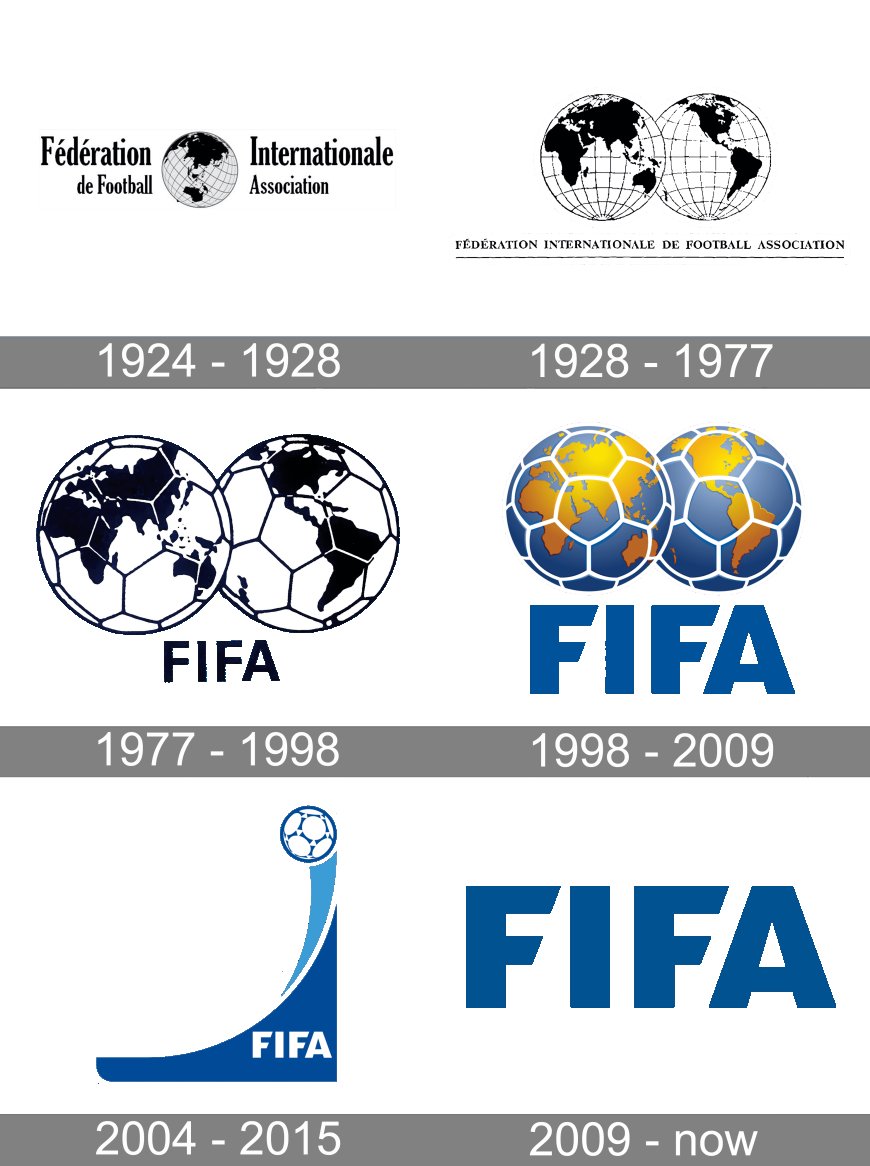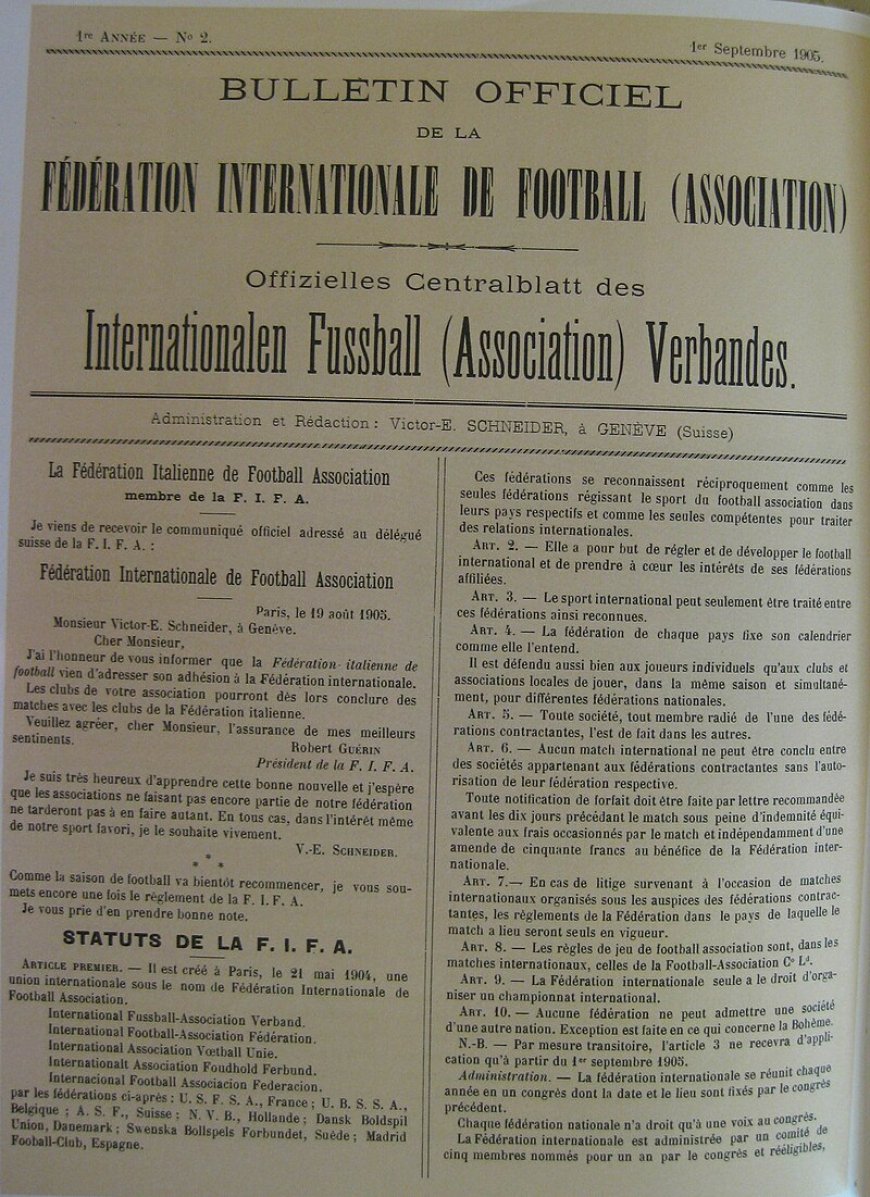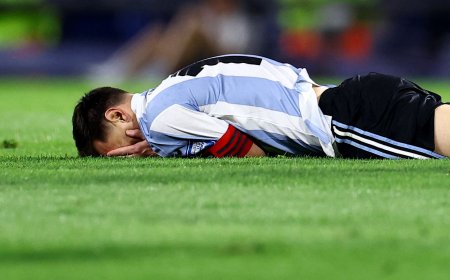The History and Development of FIFA: From Origins to Modern Controversies
"Explore the history of FIFA from its founding in 1904 to modern controversies, including the World Cup's evolution, corruption scandals, and global football influence."

1. Introduction
-
Overview of FIFA as the global governing body of football.
-
Its role in organizing international competitions and enforcing regulations.
-
The significance of football as the world’s most popular sport.
2. The First International Matches and Early Football Associations
-
The first official match between England and Scotland in 1872, ending in a 0-0 draw.
-
The establishment of the Scottish Football Association in 1873 as the world's second national football body.
-
How early football was mainly played in the United Kingdom, with the Football Association (FA) as the sole governing body.
-
The gradual increase in international matches, leading to a need for an organized global structure.
3. The Birth of FIFA (1904) and Its Initial Challenges
-
The foundation of FIFA on 21 May 1904 in Paris, including members from France, Belgium, Denmark, Netherlands, Spain, Sweden, and Switzerland.
-
Germany joined the federation the same day via telegram but was not considered a founding member.
-
Early FIFA statutes outlined membership rules, player restrictions, and game regulations.
-
Resistance from the British Home Nations (England, Scotland, Wales, and Ireland), who initially rejected FIFA's authority.
-
England’s eventual membership in 1905, aided by Baron Edouard de Lave eye.
4. FIFA’s Early Growth and Organizational Struggles (1906–1918)
-
FIFA’s first president, Maurice Robert Guérin, and later Daniel Burley Woolfall, who standardized football rules internationally.
-
FIFA struggled with organizational issues and was overshadowed by the Football Association (FA) in organizing tournaments.
-
The 1908 and 1912 Olympic football tournaments were managed by the FA, not FIFA.
-
FIFA faced competition from UIAFA, a rival international football body, which eventually collapsed.
-
FIFA’s first non-European member, South Africa, joined in 1909, followed by Argentina and Chile (1912), and the United States and Canada (1913).
-
Impact of World War I: FIFA nearly collapsed after Woolfall’s death in 1918, but Dutch administrator Carl Hirschmann kept it alive.
5. The Interwar Years and the Creation of the World Cup (1919–1938)
-
FIFA’s first post-war assembly in Brussels (1919), though the British nations withdrew in protest the inclusion of Central Powers (Germany, Austria, Hungary).
-
The return of British nations in the 1920s, but they withdrew again in 1928 over disputes regarding payments to amateur players.
-
FIFA's role in organizing Olympic football tournaments, with Uruguay winning gold in 1924 and 1928, increasing interest in global football.
-
FIFA’s decision in 1928 to launch its own world championship, leading to the inaugural FIFA World Cup in Uruguay (1930).
-
Challenges faced in the first World Cup:
-
The economic crisis in Europe led to many teams pulling out.
-
Only four European teams participated.
-
Italy hosted and won the 1934 World Cup, with the final being the first live radio-broadcasted event.
-
The 1938 World Cup in France saw Italy defend its title before World War II halted international football.
6. Post-War FIFA Expansion and Influence (1946–1970s)
-
FIFA’s revival after World War II, with the British nations rejoining in 1946.
-
The historic "Match of the Century" in 1947, where Great Britain defeated the Rest of Europe XI 6-1.
-
FIFA’s first post-war World Cup (1950) in Brazil, with Uruguay defeating Brazil in the famous "Maracanaço" final.
-
FIFA’s expansion to 84 member nations by its 50th anniversary in 1954.
-
Television transformed the World Cup, increasing its global reach and commercial value.
7. The Commercialization of FIFA and Global Expansion (1974–1998)
-
Brazilian João Havelange took over FIFA’s presidency in 1974, leading to increased sponsorship and revenue.
-
Expansion of the World Cup from 16 to 24 teams (1982), and later to 32 teams (1998) to include more nations.
-
FIFA’s role in integrating Israel into UEFA and recognizing more footballing nations like Guam, Lesotho, and Montserrat.
-
FIFA’s growing commercial partnerships with Adidas, Coca-Cola, and McDonald’s.
-
Controversy over Havelange’s leadership and alleged financial misconduct.
8. Sepp Blatter’s Era and FIFA’s Global Influence (1998–2015)
-
Blatter succeeded in Havelange in 1998, promising football growth in underdeveloped regions.
-
The first World Cup in Africa (2010) was awarded to South Africa.
-
FIFA became a multi-billion-dollar organization but faced growing corruption allegations.
-
FIFA’s website blockade in 2006 due to South Korean protests over a controversial World Cup match.
-
FIFA's altitude ban (2007): An attempt to ban high-altitude matches (affecting Bolivia, Ecuador, and Colombia), later reversed after international backlash.
9. FIFA Corruption Scandals and the 2022 Qatar World Cup Controversy
-
Qatar’s controversial 2022 World Cup bid, with allegations of bribery and vote-buying.
-
Claims that FIFA officials were offered millions in bribes in exchange for their votes.
-
High-profile FIFA executives, including Mohammed bin Hammam and Jack Warner, suspended for corruption.
-
Calls for a revote to the 2022 World Cup hosting rights.
-
Former FIFA executive Chuck Blazer exposed internal corruption, leading to FBI investigations.
-
The FIFA corruption crisis of 2015 resulted in Blatter’s resignation and arrests of multiple FIFA officials.
10. Controversial FIFA Decisions and Political Issues
-
2016 British poppy controversy: FIFA banned UK teams from wearing poppy armbands during matches.
-
UK teams defied FIFA’s ban, leading to penalties against England and Scotland.
-
FIFA’s inconsistent stance on political symbols in football, sparking international criticism.
11. FIFA’s Present and Future: Reforms and Challenges
-
Efforts to restore FIFA’s credibility after corruption scandals.
-
The introduction of VAR (Video Assistant Referee) technology to improve match fairness.
-
Expansion of the World Cup to 48 teams in 2026, increasing opportunities for smaller nations.
-
FIFAs continued to push for football development in Asia, Africa, and the Middle East.
-
Ongoing discussions about fair financial distribution, human rights issues in host nations, and the role of politics in FIFA decisions.
12. Conclusion
-
FIFA’s long journey from a small European-based association to a global football powerhouse.
-
The balance between commercial interests, political influences, and maintaining football integrity.
-
Future challenges FIFA faces in ensuring transparency, fair competition, and global inclusiveness in football.

What's Your Reaction?


















